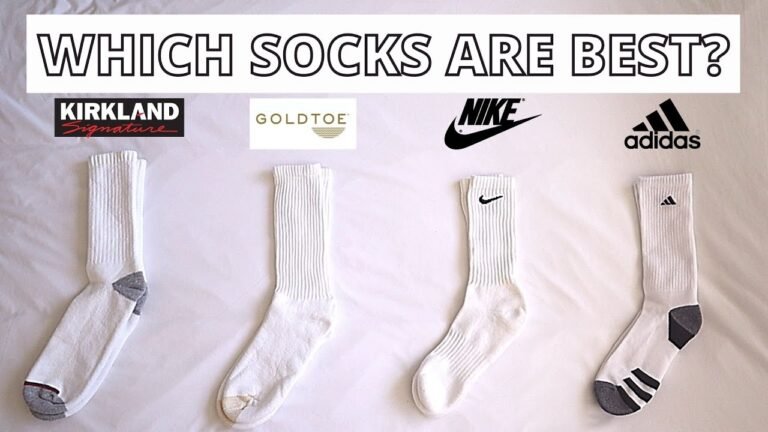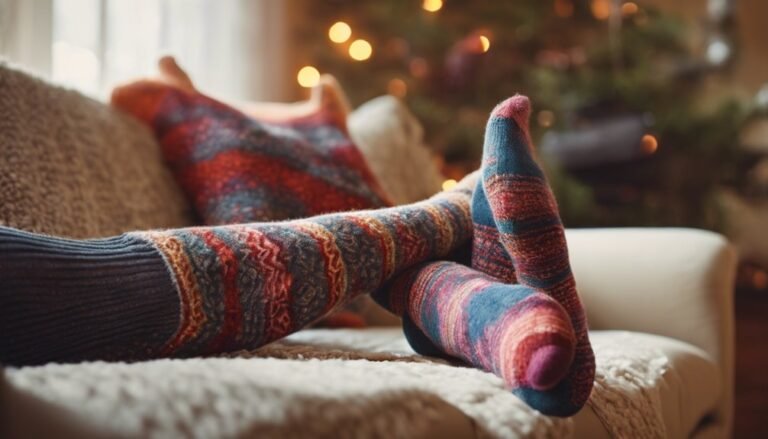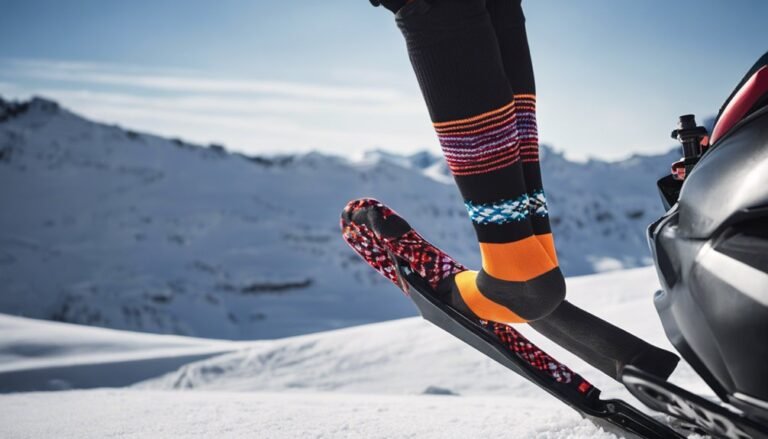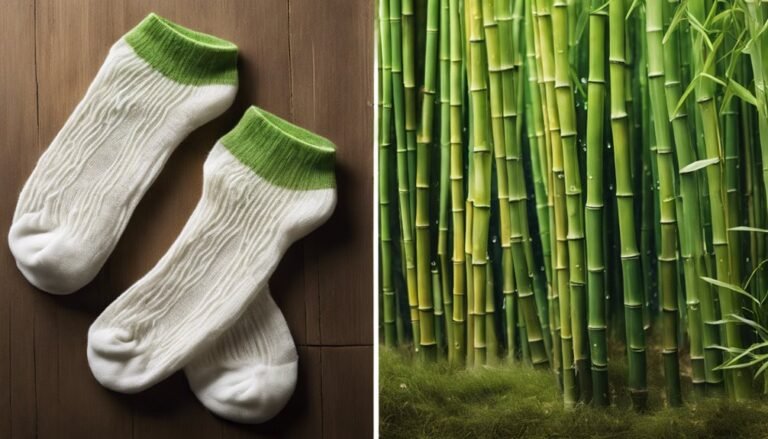Anti-Blister Socks vs. Regular Socks: Are They Worth It?
Anti-blister socks greatly outperform regular socks in preventing blisters and enhancing comfort during physical activities. Their advanced materials wick moisture away, reduce friction, and provide targeted cushioning, which minimizes the risk of irritation and fatigue. While anti-blister socks may cost more upfront, their durability and performance justify the investment for active individuals. If you want to better understand the features and benefits of these specialized socks, stick around for more insights.
Understanding Blisters: Causes and Prevention

Blisters are painful, fluid-filled pockets that form on the skin as a result of friction, heat, or irritation. Understanding blister formation is essential for anyone who values freedom in their activities. When skin rubs against surfaces, it can lead to damage, prompting the body to create a protective bubble filled with fluid. To prevent blisters, you should consider several effective prevention methods. First, choose footwear that fits well and provides adequate support. Second, use moisture-wicking socks to reduce friction. Third, apply blister prevention products, such as pads or tape, to susceptible areas. By being proactive, you can minimize discomfort and enjoy your pursuits without the hindrance of blisters.
What Are Anti-Blister Socks?
Anti-blister socks are specially designed garments that aim to reduce friction between your feet and footwear, ultimately preventing the formation of blisters. These socks incorporate design innovations such as strategic padding and moisture-wicking materials to create a barrier against irritation. The target audience includes athletes, hikers, and anyone who spends extended periods in shoes, seeking comfort and freedom during their activities. By utilizing advanced textile technology, anti-blister socks offer a snug fit without compromising breathability, ensuring your feet remain dry and well-supported. The combination of materials and construction techniques not only enhances performance but also promotes foot health, allowing you to focus on your pursuits without the distraction of discomfort. Choose wisely, and elevate your sock game for better experiences.
Key Features of Anti-Blister Socks
Anti-blister socks are engineered with specific features that enhance comfort and prevent friction. You'll find moisture-wicking technology that pulls sweat away from your skin, keeping your feet dry during intense activities. Additionally, their seamless design minimizes irritation, providing a smoother fit that further reduces the risk of blisters.
Moisture-Wicking Technology
When you're on your feet for extended periods, the choice of sock can greatly impact your comfort, especially regarding moisture management. Anti-blister socks employ advanced moisture-wicking technology designed to enhance sweat control. These socks pull moisture away from your skin, transferring it to the outer layer, where it can evaporate more efficiently. This process not only keeps your feet dry but also helps prevent blisters caused by friction and dampness. Materials like nylon, polyester, and merino wool are commonly used for their superior moisture-wicking properties. By maintaining a balanced foot environment, these socks guarantee that you stay comfortable and free while engaging in any activity, whether it's hiking, running, or simply walking around town.
Seamless Design Benefits
A well-designed sock not only manages moisture but also minimizes friction, and that's where seamless construction shines. The seamless advantages of anti-blister socks come from their unique construction differences, offering you a superior experience during any activity. Here are four benefits of seamless design:
- Reduced Friction: Fewer seams mean less rubbing against your skin, lowering blister risk.
- Enhanced Comfort: The smooth interior provides a snug fit without irritating seams.
- Improved Fit: Seamless construction adapts better to your foot's contours, ensuring a more personalized wear.
- Durability: Fewer seams often translate to increased longevity, giving you more miles from each pair.
With seamless anti-blister socks, you're investing in comfort and performance, allowing you to focus on your adventures without distraction.
Benefits of Using Anti-Blister Socks
When you opt for anti-blister socks, you're investing in enhanced comfort levels that can markedly improve your performance. These socks feature moisture-wicking properties that help keep your feet dry, reducing the risk of blisters. Additionally, their design minimizes friction areas, providing a more secure fit that supports prolonged activities.
Enhanced Comfort Levels
The superior design of anti-blister socks greatly enhances comfort levels during physical activities. By prioritizing comfort enhancement, these socks considerably improve sock performance. Here are some key benefits you'll experience:
- Cushioning: Extra padding provides support, reducing impact on your feet.
- Seamless Construction: The lack of irritating seams minimizes friction and chafing.
- Arch Support: Enhanced arch support helps maintain foot stability, especially during extended wear.
- Snug Fit: A tighter fit prevents slipping, reducing the risk of blisters while keeping your feet comfortably secure.
With these features, anti-blister socks offer a noticeable upgrade over regular socks, allowing you to enjoy your activities without discomfort. Embrace the freedom of movement that comes from superior sock performance.
Moisture-Wicking Properties
While regular socks may retain moisture, anti-blister socks excel in moisture-wicking properties, ensuring your feet stay dry during intense activities. This moisture management is essential for preventing blisters and discomfort. Anti-blister socks use advanced synthetic fibers that draw sweat away from your skin, promoting fabric breathability. This means that as you exert yourself, the socks facilitate evaporation, keeping your feet cool and reducing the risk of fungal infections. Their engineered design allows for airflow, which further enhances comfort during long periods of wear. By choosing anti-blister socks, you're investing in a product that actively works to maintain a dry environment, allowing you to focus on your performance without the distraction of wet feet.
Reduced Friction Areas
Because anti-blister socks are designed with reduced friction areas, they considerably decrease the chances of skin irritation during physical activities. This friction reduction is essential for anyone who values comfort and performance in their pursuits. Here's how these socks provide effective skin protection:
- Targeted Padding: Cushioned zones absorb impact, reducing friction against your skin.
- Seamless Construction: Fewer seams mean fewer pressure points, minimizing irritation.
- Strategic Material Placement: Different fabrics in key areas enhance breathability and minimize rubbing.
- Arch Support: Proper support helps keep your foot stable, reducing unnecessary movement and friction.
Choosing anti-blister socks can lead to a more enjoyable experience, allowing you to focus on what you love without the distraction of discomfort.
Comparing Material Composition: Anti-Blister vs. Regular Socks

When it comes to selecting socks, understanding the differences in material composition between anti-blister and regular socks can greatly impact your comfort and performance. Anti-blister socks typically use high-tech blends, often featuring moisture-wicking materials like merino wool or synthetic fibers, which enhance moisture retention and improve material durability. In contrast, regular socks may rely on cotton or basic blends, which can retain moisture and lead to discomfort during extended wear.
| Feature | Anti-Blister Socks |
|---|---|
| Material Composition | Synthetic blends, merino wool |
| Moisture Retention | High |
| Material Durability | Enhanced |
| Breathability | Excellent |
| Comfort Level | Superior |
Choosing the right sock can elevate your experience, so consider these differences carefully.
Cushioning and Support: Which Offers More?
How does the cushioning and support of anti-blister socks compare to that of regular socks? When you're out for a long day, the right cushioning materials and support levels can make all the difference. Anti-blister socks often provide superior cushioning and support, designed specifically for comfort during extended wear. Here's a quick comparison:
- Cushioning Materials: Anti-blister socks use advanced foam and padding for impact absorption.
- Support Levels: They typically feature arch support to reduce fatigue.
- Durability: Anti-blister socks tend to maintain cushioning longer.
- Fit: A snug fit in anti-blister socks minimizes friction, enhancing support.
Ultimately, if you're looking for enhanced comfort and reduced risk of blisters, anti-blister socks are likely worth the investment.
Moisture-Wicking Properties: A Closer Look
When selecting socks, understanding the fabric technology behind moisture-wicking properties is essential for your comfort. These advanced materials are designed to pull moisture away from your skin, ensuring dryness during various activities. This not only enhances your overall comfort but can also improve your performance by keeping your feet cooler and more stable.
Fabric Technology Explained
While traditional socks may offer basic comfort, anti-blister socks incorporate advanced fabric technologies designed to enhance moisture-wicking properties. These innovations not only improve comfort but also contribute to better fabric durability and moisture resistance. Here's how these technologies work for you:
- Hydrophobic Fibers: These repel water, ensuring sweat moves away from your skin.
- Breathable Mesh: Promotes airflow, helping regulate temperature during intense activities.
- Seamless Construction: Reduces friction and irritation, minimizing blister risk.
- Antimicrobial Treatments: Prevent odor and bacteria buildup, keeping your feet fresh.
Dryness and Comfort
The advanced fabric technologies found in anti-blister socks greatly enhance dryness and comfort through effective moisture-wicking properties. These socks draw moisture away from your skin, promoting dry skin and improving overall foot hygiene. Unlike regular socks, which may retain sweat, anti-blister options create a breathable environment, reducing the risk of blisters and fungal infections.
| Feature | Anti-Blister Socks |
|---|---|
| Moisture-Wicking | Yes |
| Breathability | High |
| Comfort Level | Enhanced |
When you prioritize dryness and comfort, anti-blister socks become an essential addition to your wardrobe. They not only keep your feet feeling fresh but also contribute to better foot health over time.
Performance During Activities
Understanding how moisture-wicking properties function is essential for evaluating performance during various activities. When you engage in physical exertion, the right socks can greatly influence your sock performance and activity impact. Here are four key factors to reflect on:
- Material Composition: Look for synthetic fibers like polyester or nylon designed to pull moisture away from your skin.
- Breathability: A well-ventilated sock allows for better air circulation, reducing sweat accumulation.
- Fit and Design: Properly fitting socks minimize friction and promote moisture management.
- Durability: High-quality moisture-wicking socks can withstand rigorous activities without losing their effectiveness.
Cost Analysis: Are Anti-Blister Socks Worth the Price?
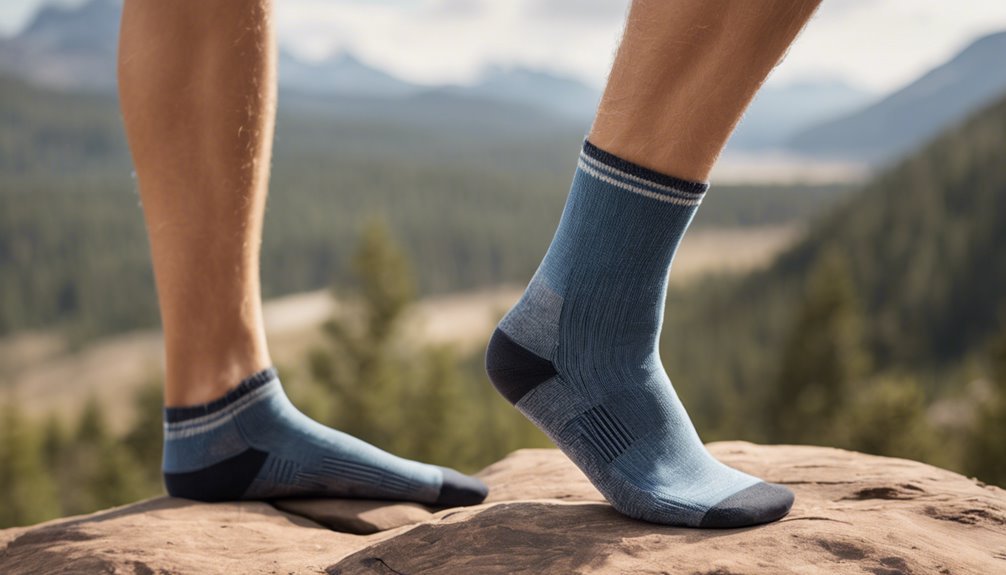
How do anti-blister socks stack up against regular socks regarding cost versus benefit? In a cost comparison, anti-blister socks often come at a premium. However, you should consider their potential for reducing discomfort and preventing blisters. The value assessment can be illustrated as follows:
| Sock Type | Average Cost | Expected Lifespan |
|---|---|---|
| Anti-Blister Socks | $15-$25 | 6-12 months |
| Regular Socks | $5-$15 | 3-6 months |
While regular socks may seem cheaper upfront, the longevity and comfort of anti-blister socks might save you money in the long run. If you value performance and foot health, investing in anti-blister socks could be worthwhile for your adventures.
User Experiences: Testimonials and Reviews
While many users rave about the benefits of anti-blister socks, firsthand experiences reveal a range of opinions that can help guide your decision. Here are some notable user testimonials and reviews:
- Comfort Level: Many users appreciated the cushioning, claiming they felt less fatigue during long walks.
- Blister Prevention: Several reviews highlighted a significant reduction in blisters, especially during intensive activities.
- Durability: Users often mentioned that these socks maintained their shape and performance even after multiple washes.
- Price vs. Performance: A few reviews pointed out that while anti-blister socks are pricier, the benefits often justify the investment for avid walkers or runners.
Ultimately, your experience may vary, but these insights could help you make an informed choice.
Making the Right Choice for Your Footwear Needs
When selecting the right socks for your footwear needs, what factors should you consider? First, think about your activity level. If you're engaging in high-impact activities, anti-blister socks enhance comfort and reduce friction, making them a smart choice. Next, consider sock durability; quality materials and construction guarantee they withstand wear and tear, prolonging their lifespan. Additionally, pay attention to fit; socks that are too tight or loose can lead to discomfort, negating their benefits. Finally, evaluate moisture-wicking properties. This feature is essential for keeping your feet dry and preventing blisters. By prioritizing these elements in your footwear selection, you'll enhance your overall experience, allowing you to focus on your activities without worrying about foot discomfort.
Frequently Asked Questions
Can Anti-Blister Socks Prevent Blisters Completely?
When it comes to blister prevention techniques, anti-blister socks can greatly reduce the risk, but they won't guarantee complete prevention. Their specialized sock material benefits include moisture-wicking and cushioning, enhancing comfort during your activities.
How Often Should I Replace My Anti-Blister Socks?
You should replace your anti-blister socks every 6 to 12 months, depending on usage and sock longevity. Regular wear can affect their effectiveness, so monitor their condition and replace them for ideal performance and comfort.
Are Anti-Blister Socks Suitable for All Types of Footwear?
Anti-blister socks generally offer good footwear compatibility, but it depends on the sock material. Look for blends designed for specific shoes, ensuring ideal performance and comfort without compromising your freedom of movement during activities.
Do Anti-Blister Socks Come in Different Sizes and Styles?
When training for a marathon, you'll find anti-blister socks available in various size variations and style options. They cater to different preferences, ensuring comfort and performance, whether you're running or hiking.
Can I Wear Anti-Blister Socks for Activities Other Than Running?
Absolutely, you can wear anti-blister socks for various activities like hiking. Their moisture management properties help keep your feet dry, reducing friction and enhancing comfort, ultimately providing significant hiking benefits during long treks.


